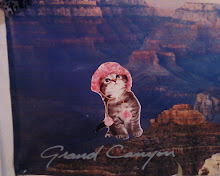Tardy in our attempt to break convention and beat the (other) tourists to visit the inside of the cathedral, we made it just in time to get a good spot in line to climb the tower (once before when I lived and studied briefly in Paris, I was one of the few students in my program to actually follow the instructions of our professor on a certain day when we were to be at Notre Dame by eight in the morning. Among the hush and the dust of the pews I sat and wrote an assignment in French about sanctuary and thick stone walls and time-outside-of-time; the cathedral smelled vacant and idle). Through the fog of the morning we took in our first view of Paris as a whole entity, the Eiffel Tower’s upper third hidden in a low mist. By the time we made it to tour the Cathedral’s interior, it was busy sight to behold and the nativity set up had a strangely cheap feeling.
That day, we had lunch in the Latin district at a Sicilian restaurant with very good pizza (maybe the 2nd best pizza I’ve had in France) and with a very unfortunate name (Pizza Roma—come on, bra. Way too easy.) From there we went the Pantheon, where France’s national heroes are buried, one of my favorite sites to visit in Paris. As I tried to explain it to Jay, if Notre Dame is the cathedral of catholic France, the Pantheon is the church of the French Republic. Although we have the Lincoln Memorial and the Washington monument to represent our nation’s mythic past, the reason why I love the Pantheon is because it is a monument to the idea of the Republic. France has any number of more illustrious or ancient monuments to represent its thousands of years of Gallic history, but it is this building—once a neoclassical church dedicated to Paris’ patron saint St. Geneviève—that houses the country’s memory of the idea that people could rule themselves.
Standing before La convention nationale, I once wrote:
In 2000 years human beings or aliens will find the autel républican in the ruins of the Panthéon in an abandoned Paris, and they will have forgotten the French language. A woman will uncover the Rosetta stone of what will become a resurgence in interest for old European languages and these beings of the future will read the block letters engraved on the autel, VIVRE LIBRE OU MOURIR. They will look into the decomposed and cracked and blank eyes of Marianne and they will see the unyielding gaze of a goddess holding a broadsword—a powerfully serious visage in the midst of ruins—and they will ask themselves in reverence who the people were who worshiped at this alter of stone, and freedom.
We spent that evening exploring the Christmas markets on Monmartre. Along with lonely tourists and the standard groups of loud drunk men wearing tracksuits, we drank whiskey and coke on the steps of Sacre Coeur, taking in the twinkling lights and the Eiffel Tower’s upper third obscured in a low mist. The next morning we would arrive in Rennes by carpool, and after two days exploration of one of my favorite small cities, take an hour flight back in time to England, United Kingdom.
p.s. fucking formatting.


